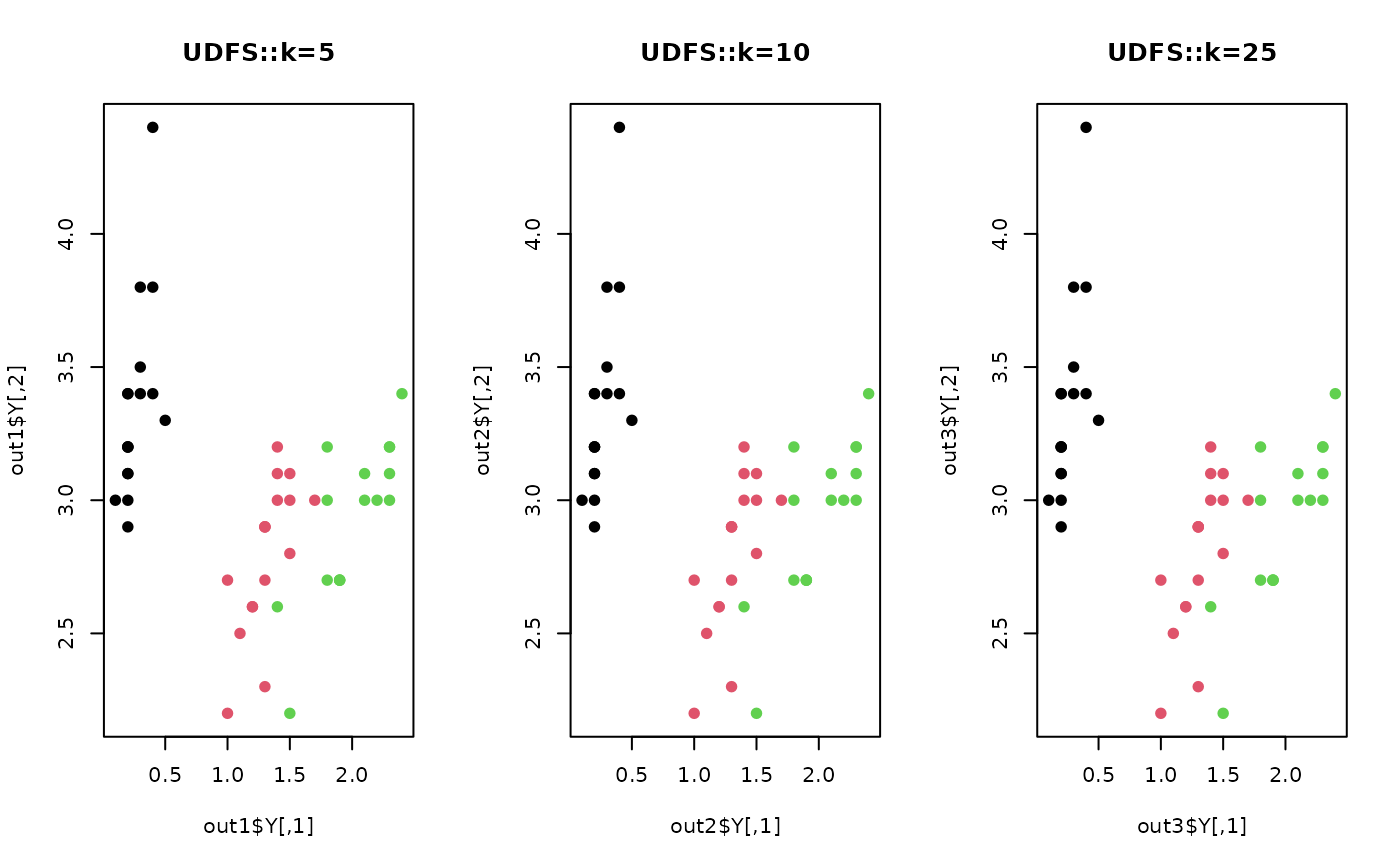Though it may sound weird, this method aims at finding discriminative features under the unsupervised learning framework. It assumes that the class label could be predicted by a linear classifier and iteratively updates its discriminative nature while attaining row-sparsity scores for selecting features.
do.udfs(
X,
ndim = 2,
lbd = 1,
gamma = 1,
k = 5,
preprocess = c("null", "center", "scale", "cscale", "whiten", "decorrelate")
)Arguments
- X
an \((n\times p)\) matrix or data frame whose rows are observations and columns represent independent variables.
- ndim
an integer-valued target dimension.
- lbd
regularization parameter for local Gram matrix to be invertible.
- gamma
regularization parameter for row-sparsity via \(\ell_{2,1}\) norm.
- k
size of nearest neighborhood for each data point.
- preprocess
an additional option for preprocessing the data. Default is "null". See also
aux.preprocessfor more details.
Value
a named list containing
- Y
an \((n\times ndim)\) matrix whose rows are embedded observations.
- featidx
a length-\(ndim\) vector of indices with highest scores.
- trfinfo
a list containing information for out-of-sample prediction.
- projection
a \((p\times ndim)\) whose columns are basis for projection.
References
Yang Y, Shen HT, Ma Z, Huang Z, Zhou X (2011). “L2,1-Norm Regularized Discriminative Feature Selection for Unsupervised Learning.” In Proceedings of the Twenty-Second International Joint Conference on Artificial Intelligence - Volume Volume Two, IJCAI'11, 1589--1594.
Examples
## use iris data
data(iris)
set.seed(100)
subid = sample(1:150, 50)
X = as.matrix(iris[subid,1:4])
label = as.factor(iris[subid,5])
#### try different neighborhood size
out1 = do.udfs(X, k=5)
out2 = do.udfs(X, k=10)
out3 = do.udfs(X, k=25)
#### visualize
opar = par(no.readonly=TRUE)
par(mfrow=c(1,3))
plot(out1$Y, pch=19, col=label, main="UDFS::k=5")
plot(out2$Y, pch=19, col=label, main="UDFS::k=10")
plot(out3$Y, pch=19, col=label, main="UDFS::k=25")
 par(opar)
par(opar)